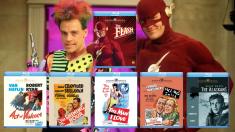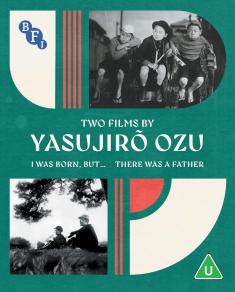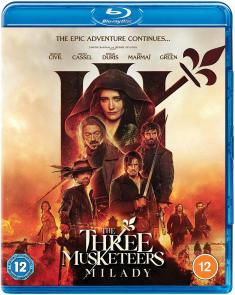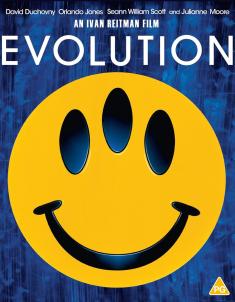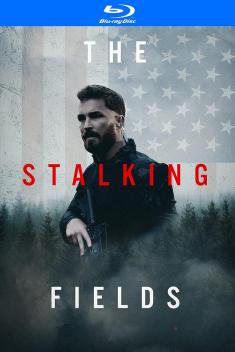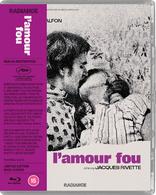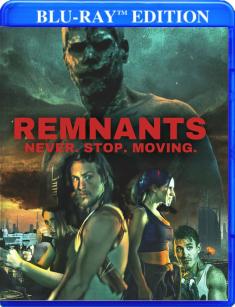8 1/2
Overview -
Marcello Mastroianni plays Guido Anselmi, a director whose new project is collapsing around him, along with his life. One of the greatest films about film ever made, Federico Fellini’s 8 1/2 (Otto e mezzo) turns one man’s artistic crisis into a grand epic of the cinema. An early working title for 8 1/2 was The Beautiful Confusion, and Fellini’s masterpiece is exactly that: a shimmering dream, a circus, and a magic act.
Storyline: Our Reviewer's Take

If you love anything at all about cinema as an art form, you must love Fellini. There's no argument to be made otherwise. The great maestro reinvented the medium of film in his own image, and expanded our understanding of what it could be. He didn't just make movies. He poured his soul onto a celluloid canvas and projected the bizarre workings of his mind for the world to see. That he could accomplish such a feat and still make films that were so joyous and wonderful, so rich and strange and filled with life, is a staggering achievement that puts him in the pantheon of most important artists of the 20th Century.
The self-reflexive title of '8 ½' refers to the film's numerical position in Federico Fellini's career. Previously, he'd co-directed one feature ('Variety Lights', with Alberto Lattuada), then directed six more on his own and two short segments of omnibus compendium projects. By his own count, that made '8 ½' literally his eighth and a half film. Of those, it was not even his first masterpiece. At the very least, 'La Strada' (1954, winner of the first official Academy Award in the category of Best Foreign Language Film) and 'La Dolce Vita' (1960) both qualify for that description. However, '8 ½' is the first Fellini film in the sense of what would become his signature style.
Fellini's early work as a screenwriter had been in the Neo-Realist tradition of contemporaries like Roberto Rossellini (for whom he had co-written the classic 'Rome, Open City'). When he segued into directing, his first movies were built on the backbone of that genre. However, in a move that was incredibly controversial among his peers, the director began to incorporate more whimsical elements into his films, bits of wonder and magic and poetry that broke with the strict ideologies of Neo-Realism. In later years, pictures like 'La Strada' might be defined in the genre we now call Magic Realism or Poetic Realism. At the time, there was nothing else like it on cinema screens. If 'La Strada' brought Fellini his first taste of major international acclaim, the cynical chic of 'La Dolce Vita', which chronicled the exploits of Rome's celebutantes and hangers-on in a fashion peppered with many wondrous images, made him a sensation.
And then came '8 ½', Fellini's first venture into true Surrealism, and the first of his shamelessly autobiographical purgings of his own thoughts and memories and anxieties onto celluloid. The movie tells the story of a famed Italian filmmaker named Guido Anselmi (the great Marcello Mastroianni) who, on the verge of his latest major production, is experiencing a drought of creative inspiration. He's completely blocked, and desperate not to let anyone know. Feigning an illness, he postpones the start of shooting for two weeks to get some rest and solitary time at a health spa. Sadly, he soon discovers that getting away is not that easy. Just about his entire life – producers, writers, collaborators, critics, actors, agents, the press, his wife, his mistress, and other women he's either entangled with or desires – converge on the spa, pulling him this way and that, constantly dividing his attention. Much of this chaos is of Guido's own causing. For as much as the complications of his life drain his spirits, he narcissistically feeds off the attention.
The story is punctuated by Guido's fantasies, dreams, and reminiscences. Freudian symbolism abounds throughout. In the film's famous opening, the character imagines himself claustrophobically trapped in a traffic jam, the world pressing down on him, until he tries to escape, flying away like a kite, but is then dragged back down to earth and flung into the sea. Later, he delves back into exaggerated memories of his childhood – the psychological scars imposed on him by a Catholic upbringing, and his first exposure to sex via the beauty and grotesquerie of Saraghina, a raw earthy figure of monstrous sexuality. Among other things, this leads to a fantasy of Guido corralling all the women in his life into his own personal harem, where they express both their love and hatred for him and for each other, and must be tamed like wild animals. All the while, as his project becomes more personal and autobiographical, our understanding grows that the movie Guido is making is the very one we're watching.
In comparison to Fellini's later works, the Surrealistic elements in '8 ½' are remarkably straightforward and linear. Each fantasy has a direct correlation to the action of the plot. This makes the film very approachable, and an ideal starting point for new viewers unfamiliar with the director. His subsequent movies would simply explode the crazy fantasy world from his mind onto the screen and never look back. Many are great films in their own right, some of them masterpieces (and others simply indulgent). But few are as easy to step into without prior knowledge and background as this one.
It's not just the fantastical portions that make '8 ½' a masterpiece. The film is also an unflinching and honest self-portrait of an artist laying bare his soul, personal flaws and all. He doesn't hold back at all from depicting his own self-absorption, his philandering, and his reprehensible treatment of his wife (Anouk Aimée, obviously standing in for Guiletta Masina). Every thought in Fellini's head is projected into the character, seemingly without filtering. The movie allows him to cut to some deep emotional truths about himself.
And yet, despite these potentially dark themes, '8 ½' is a work of great joy and exuberance, of wonder and amazement, and love of life and art. Fellini's movies often contain a circus motif. He treated his own life and career as a giant circus, full of fabulous and bizarre sights, some possibly frightening but altogether a cause for celebration. This theme culminates in the movie's glorious ending, one of the most perfect ever committed to film.
Bravissimo, Federico! Bravissimo!
The Blu-ray: Vital Disc Stats
'8 ½' has been added to The Criterion Collection as spine #140 (to match the studio's earlier DVD edition). The Blu-ray comes packaged in a clear keepcase, and includes a 27-page booklet. Criterion has not programmed any obnoxious trailers or promos before the main menu.
Video Review

Criterion has an exceptional track record on Blu-ray so far. The company's discs typically rank among the very best for treatment of classic films in high definition. In most respects, '8 ½' is on par with their finest work, save for one pretty big caveat.
The 1080p/AVC MPEG-4 transfer preserves the movie's 1.85:1 black & white photography in luminous fashion. The gray scale is perfect. Light film grain is properly rendered without any noticeable filtering. The image has a terrific amount of detail. Contrast may be a little flat, but that seems to be intentional; the movie's visual scheme is designed to be quite bright. There has been no evident contrast boosting or crushed detail in either bright whites or dark shadows.
The liner notes in the accompanying booklet contain the studio's usual boilerplate text about having cleaned up "thousands of instances of dirt, debris, scratches, splices, warps, jitter, and flicker." But they say that about every movie. The first scene is a little rough in terms of graininess and has a noticeable scratch on the film elements. Things clear up immediately afterwards, yet small bits of dirt or hair continue to pop up at the bottom of the frame sporadically. These were probably artifacts from the camera and embedded on the film negative. Criterion either wasn't able to remove them all or made a conscious decision not to. In either case, they are not terribly distracting. This is an excellent, very film-like presentation.
The only serious problem here is a recurring appearance of edge ringing artifacts along sharp contrasts. The picture does not in general have the coarse textures or grittiness associated with artificial sharpening. Nonetheless, these edge halos appear in many places throughout the movie. (You can see some pretty clearly in the clip of Mastroianni walking down the hallway that plays during the disc's menu loop, as well as that corresponding scene in the movie.) This may possibly be the result of some sort of chromatic aberration in the original camera lenses, rather than digital post-processing in the video transfer. Whatever it is, it stands out just enough to be a distraction. However, everything the disc does right is done so right that the overall results are still very impressive.
Audio Review

For a movie from 1963, the disc's Italian PCM 2.0 mono soundtrack is surprisingly crisp and clear. Analog tape hiss was either negligible on the original source recordings or has been carefully filtered out. Don't go expecting any broad dynamic range, because the track simply wasn't designed that way. Fidelity is at least adequate throughout, keeping in mind the film's age and origins. The sound is quite bright, though. Dialogue can be a little shrill, and music is often uncomfortably loud in relative volume.
Like almost all Italian productions of the era, the film was shot completely without sound recording on set. In fact, Fellini was notorious for yelling direction at his actors as the cameras rolled, and for rewriting dialogue after-the-fact. Every line of dialogue was dubbed during post production, and there's no mistaking it. Lip sync is completely erratic; what the actors spoke on camera may have no relation to their final lines, if in fact they were even speaking the same language at all.
Words, sound effects, and background elements sound tonally detached from one another. Unlike modern productions, there has been little to no effort made to produce a realistic soundstage. The entire track sounds very artificial and manufactured. That's simply the convention of filmmaking in the era, not something that Criterion has any control over. Once you accept that, Fellini makes interesting use of sound effects and ambient noises (especially his recurring theme of wind). For what it is, the Blu-ray audio track is a very good reproduction of the film's original sound mix.
Special Features

The Blu-ray carries over all of the supplements from Criterion's earlier DVD edition. Although all of the features on the Blu-ray are encoded at 1080i resolution, most have clearly been upconverted from standard-def NTSC or PAL sources.
- Booklet – The 27-page booklet included with the disc contains essays by Fellini biographer Tullio Kezich and UC Santa Barbara film professor Alexander Sesonske, as well as excerpts from an interview with the director himself.
- Audio Commentary – The commentary track on the disc has been compiled from an audio essay read by actress Tanya Zaicon, an interview with Fellini friend (and director of the documentary 'Ciao, Federico!') Gideon Bachmann, and another interview with NYU film professor Antonio Monda. The essay provides a guide to Fellini's use of symbolism in the film, while the other interviews fill in the gaps with production stories and context for the movie and Fellini's career. This is a very interesting, listenable commentary.
- Terry Gilliam Introduction (SD, 7 min.) – The idiosyncratic filmmaker offers his appreciation for Fellini, and explains how the director inspired and influenced his own career.
- Fellini: A Director's Notebook (HD?, 51 min.) – This 1969 NBC television special is ostensibly a "documentary" by Fellini about the preparations for his film 'Satyricon'. There's not much documentary-like about it, however. The entire piece is patently artificial and surreal, a confusing mix of fact and fiction. The film contains many of the director's signature obsessions such as recreations of his childhood, the intersection of Rome's ancient past with modern life, and plenty of satire about the vapidness of critics and celebrity. Fans of the director will find it quite interesting. I can't imagine what American television audiences of the time must have made of it. (Notes on Criterion's packaging claim that the piece is a "high-definition digital transfer of a new restoration." You'd be hard-pressed to tell that by looking at it. The film source is extremely faded, damaged, and swamped in heavy grain. At no point does it ever display better than a VHS level of detail. I assume that this is all that survives of it, unfortunately. The only audio track is a mono English dub, which sounds awful and has terrible sync, but is nonetheless very probably the original language mix.)
- Fellini Letter – This translation of a letter to the network outlines Fellini's plans for the 'Director's Notebook'.
- Nino Rota: Between Cinema and Concert (SD, 47 min.) – A 1993 German TV documentary about the composer. In contrast to the larger-than-life director he is most often associated with, Rota was a very private man and was rarely photographed or interviewed. The documentary charts his career from child prodigy to prolific film composer. It also goes into some detail about his unapologetic tendency to recycle his older music for newer projects, and the controversy this caused when his Oscar nomination for 'The Godfather' was withdrawn.
- Sandra Milo (SD, 27 min.) – An interview with the actress who played Guido's mistress Carla in the film. Not at all coincidentally, she was also one of Fellini's mistresses for 17 years. She tells many wonderful, horrible stories about her time with him, and has a great anecdote about how she was cast in '8 ½'.
- Lina Wertmüller (SD, 17 min.) – The director of 'Seven Beauties' (among many others) shares stories of her friendship with Fellini and working on '8 ½' with him.
- Vittorio Storaro (SD, 17 min.) – The acclaimed cinematographer of many films such as 'Last Tango in Paris' and 'Apocalypse Now' did not work on '8 ½', but offers his appreciation for it and other works by Gianni di Venanzo.
- Theatrical Trailer (SD, 3 min.) – This English-language trailer has not a single line of dialogue. Instead, it's plastered with countless critics' quotes. I suppose that was the only way to sell a foreign-language film at the time, by disguising the fact that it actually was a foreign-language film.
- Photography by Gideon Bachmann – A short gallery of behind-the-scenes photos by the director's friend.
- Still Galleries – More BTS photos (presumably not by Bachmann), along with some production notes.
HD Bonus Content: Any Exclusive Goodies in There?
Criterion very rarely adds exclusive features to their Blu-ray releases. They have made an exception in this case, however.
- The Last Sequence (SD, 50 min.) – The first ending that Fellini shot for '8 ½' was set on a train car and apparently symbolized the main character's acceptance of death. The director shot an alternate sequence (with the opposite theme) intended only for the film's trailers, and liked it so much that he ditched the train scene. He then destroyed the original footage. All that survives of it are behind-the-scenes production photographs. This documentary provides those photos, played to a narration of vintage audio interviews with the director. This is interspersed with many other BTS photos, and newer interviews with surviving cast and crew members who describe Fellini's working methods and many superstitions.
Federico Fellini's masterpiece '8 ½' is an essential part of any film lover's collection. Criterion does the movie justice with a lovely (if somewhat flawed) transfer and an excellent package of bonus features. The disc is very highly recommended. Hopefully, it will prove to be just the first of many Fellini releases on Blu-ray from Criterion.
